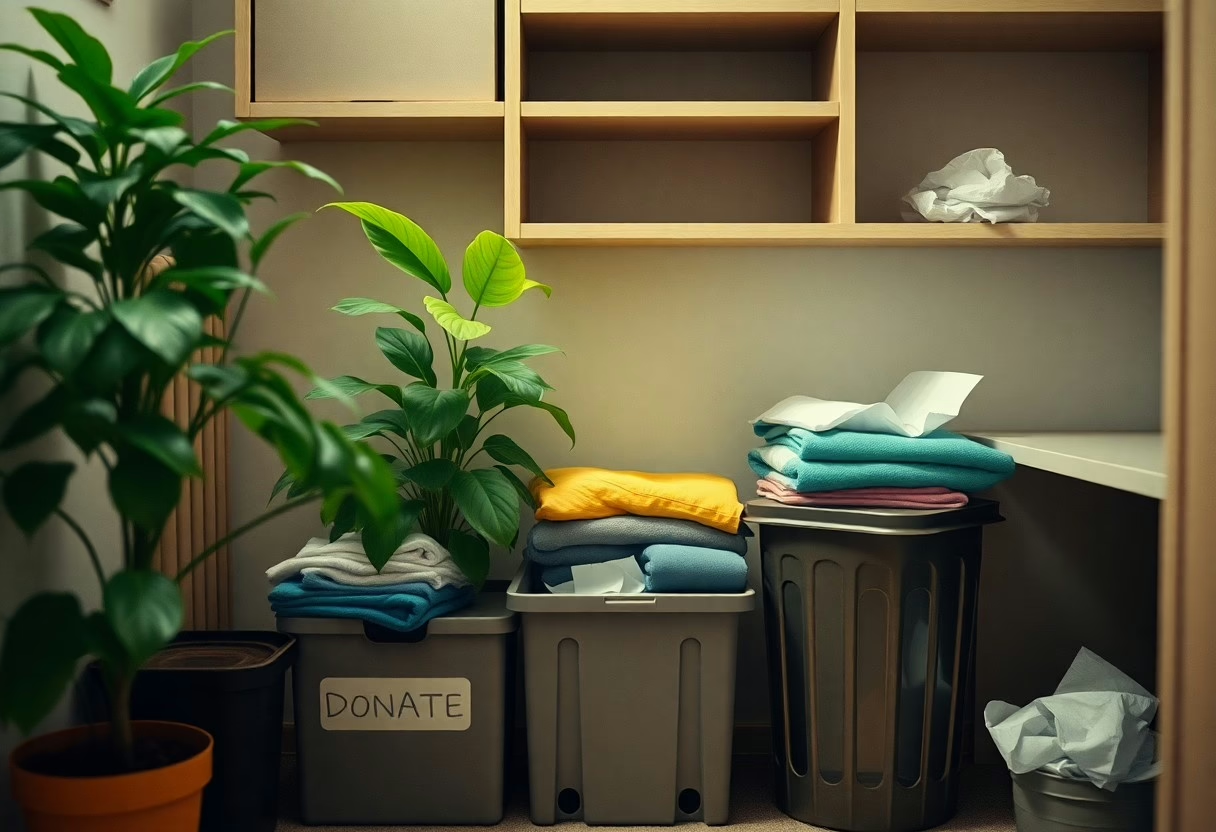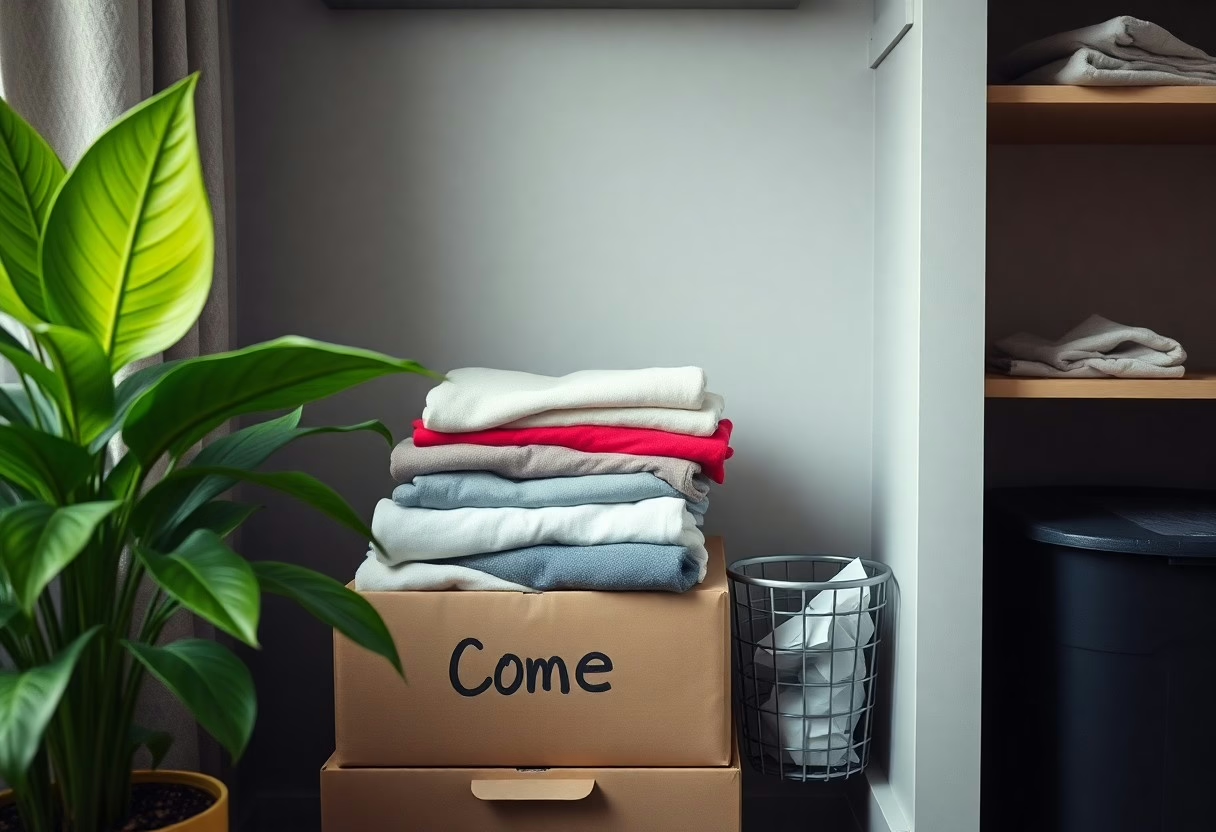Understanding the Decluttering Journey
Creating a serene living space doesn’t require a complete life overhaul – sometimes, all it takes is a thoughtful weekend of intentional decluttering. The relationship between our environment and mental well-being runs deeper than we might realize, as a cluttered space often reflects and contributes to a cluttered mind. When we begin to clear our physical surroundings, we simultaneously create room for mental clarity and emotional peace. This transformation starts with understanding why decluttering matters. As we navigate our daily lives, our homes naturally accumulate items that gradually occupy not just physical space, but mental bandwidth as well. This accumulation can subtly affect our mood, productivity, and overall sense of well-being. The impact of a cluttered environment extends beyond mere aesthetics – it can influence our sleep quality, stress levels, and even our ability to focus on important tasks. By acknowledging these connections, we can approach decluttering not as a mundane chore, but as an investment in our overall quality of life.
Strategic Areas for Weekend Clearing
The journey to a clutter-free home begins with identifying key areas that typically harbor unnecessary items. Start with expired products lurking in your kitchen cabinets and bathroom shelves. These items not only waste space but can pose potential health risks. Moving through your kitchen, evaluate those specialty gadgets purchased with good intentions but rarely used – that pasta maker you used once, the juicer that seemed essential during your health kick, or the bread machine gathering dust in the corner. Your wardrobe offers another significant opportunity for decluttering – those clothes that haven’t seen daylight in the past year are more than just unused items; they’re silent energy drains, creating decision fatigue every time you open your closet. Consider the emotional attachments you might have to certain pieces and whether they truly serve your current lifestyle and personal style. The technology corner of your home deserves special attention, where obsolete chargers, broken electronics, and outdated devices often accumulate in forgotten drawers, creating technological graveyards that serve no purpose. Look for duplicate items throughout your home – multiple sets of measuring cups, excess towels, or books you’ll never read again. These duplicates often create unnecessary bulk without adding value to your daily life.

Creating a Sustainable System
To make this decluttering journey sustainable, approach it with strategy rather than impulse. Set a realistic timeframe for your weekend project, breaking it into manageable sessions with clear beginnings and endings. This structured approach prevents burnout and maintains motivation throughout the process. Create a concrete plan for items you’ll donate, identifying specific organizations that can benefit from your excess, transforming your decluttering effort into an act of community service. Consider adopting the One Less Challenge, removing a single item daily or weekly, which builds a sustainable habit of mindful consumption. This simple practice can lead to remarkable results over time, as removing 365 items in a year can significantly impact your space. Implement a one-in, one-out rule to prevent future accumulation, ensuring that new purchases don’t undo your hard work. This rule forces you to think critically about each new item you bring into your home, questioning its necessity and value in your life. Establish designated spaces for different categories of items, making it easier to maintain order and quickly spot when areas begin to accumulate clutter again.
Maintaining Your Clutter-Free Space
Remember that decluttering is a journey, not a destination. Each item you remove creates space for something more valuable – whether that’s physical room, mental clarity, or simply the peace of knowing everything in your home serves a purpose. Support from family, friends, or online communities can provide additional motivation and accountability. Share your goals and progress with others who understand the challenges and rewards of creating a clutter-free environment. Regular maintenance becomes crucial after the initial decluttering effort. Schedule monthly check-ins to evaluate your space and address any areas that might be collecting unnecessary items. These check-ins don’t need to be time-consuming – even 15 minutes can be enough to maintain your progress. By approaching decluttering with intention and strategy, you transform what could be an overwhelming task into an achievable weekend project. The result isn’t just a tidier space – it’s a more peaceful mind, a more efficient daily routine, and a home that truly supports your well-being. As you continue this journey, you’ll likely find that the benefits extend far beyond the physical aspects of your home, influencing your purchasing habits, time management, and overall approach to living with intention.


